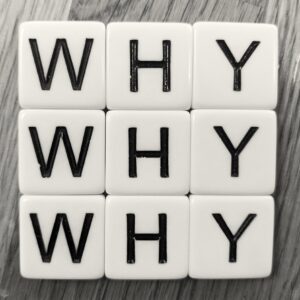I’ve written a lot about the “what” and the “how” of Strategy Deployment, but never really about “why”. That is probably slightly ironic, given the reasons I’m so passionate about it. The “why” of strategy is often missing from most transformations I am asked to help with. In this post, I hope to address that. I will describe three reasons why you would want to use Strategy Deployment for a transformation, and what the challenges are that it addresses.
Strategy is not deterministic
Firstly, you can’t know everything upfront. Implementing a strategy is not simply a case of putting a plan together and executing it. There are generally too many factors at play. This means that neatly decomposing a problem down into small pieces, cascading it through an organisation, and hoping that all the elements will magically re-combine, doesn’t work.
Instead, Strategy Deployment consists of trying a variety of experiments and probes, which are all plausible and coherent with a sense of direction. The goal is to discover and learn what works and what doesn’t. This messy coherence, as opposed to a neat decomposition, is one of the aspects of the X-Matrix which can be very powerful.
Strategy is not static
Secondly, you can’t define a future state. Even if it was possible to neatly decompose a strategy into a perfect plan, it still probably won’t work. The chances are that by the time it gets implemented, the world will have changed. New competitors, technologies, or other dynamics may have emerged which couldn’t be predicted. Thus the plan soon becomes obsolete.
Strategy Deployment uses feedback and cadences to learn about what is working and not working. These cadences also enable learning about what is changing, evolving and emerging. What might have worked yesterday, might not work today. Rather than striving to implement an Ideal Future, Strategy Deployment focuses more on doing “the next right thing” towards an Ideal Present. As a result, a strategy can be realised step by step instead of a giant leap.
Strategy is not mechanistic
Finally, you can’t impose (or inflict) a transformation on people. Even when working towards an Ideal Present, you still need to engage the people closest to the problem. They are the people who have the best knowledge and experience to discover what to try. It’s not a case of senior leadership coming up with some ideas and telling the rest of the organisation to get them done. Rather than treating the organisation as a mechanical entity which just needs the cogs turning, we should treat is an elastic one which has flexibility, resilience and adaptability. (More on this in a future post).
Strategy Deployment includes Catchball to address just this. Invite people to take part in the transformation. Give them clarity of intent for the transformation. Allow them autonomy and agency to collaborate and be creative with how they meet the intent. I have found backbriefing to be a great way to achieve this.
What have I missed? What other reasons would you give?

